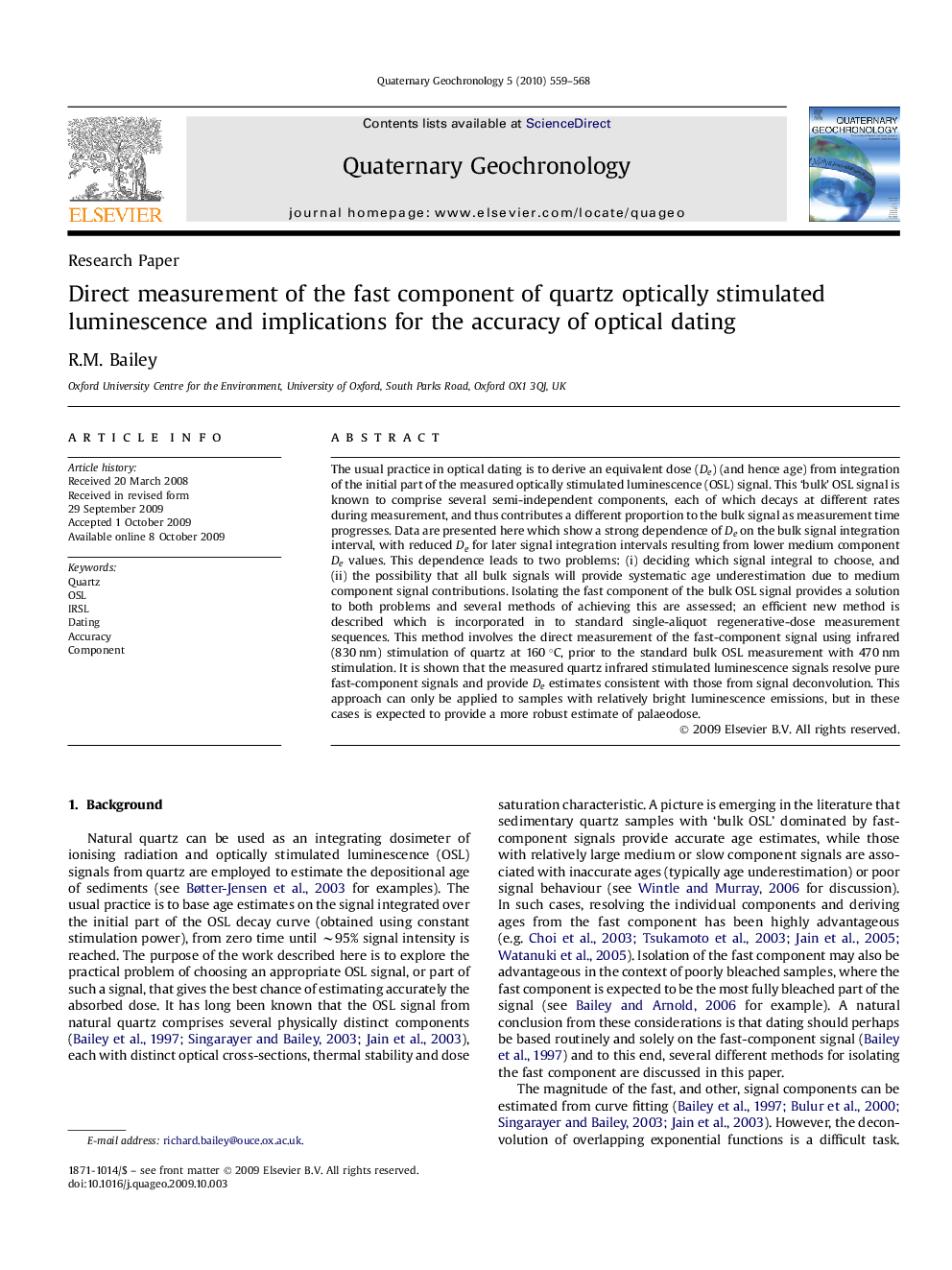| Article ID | Journal | Published Year | Pages | File Type |
|---|---|---|---|---|
| 4725203 | Quaternary Geochronology | 2010 | 10 Pages |
Abstract
The usual practice in optical dating is to derive an equivalent dose (De) (and hence age) from integration of the initial part of the measured optically stimulated luminescence (OSL) signal. This 'bulk' OSL signal is known to comprise several semi-independent components, each of which decays at different rates during measurement, and thus contributes a different proportion to the bulk signal as measurement time progresses. Data are presented here which show a strong dependence of De on the bulk signal integration interval, with reduced De for later signal integration intervals resulting from lower medium component De values. This dependence leads to two problems: (i) deciding which signal integral to choose, and (ii) the possibility that all bulk signals will provide systematic age underestimation due to medium component signal contributions. Isolating the fast component of the bulk OSL signal provides a solution to both problems and several methods of achieving this are assessed; an efficient new method is described which is incorporated in to standard single-aliquot regenerative-dose measurement sequences. This method involves the direct measurement of the fast-component signal using infrared (830 nm) stimulation of quartz at 160 °C, prior to the standard bulk OSL measurement with 470 nm stimulation. It is shown that the measured quartz infrared stimulated luminescence signals resolve pure fast-component signals and provide De estimates consistent with those from signal deconvolution. This approach can only be applied to samples with relatively bright luminescence emissions, but in these cases is expected to provide a more robust estimate of palaeodose.
Related Topics
Physical Sciences and Engineering
Earth and Planetary Sciences
Geochemistry and Petrology
Authors
R.M. Bailey,
